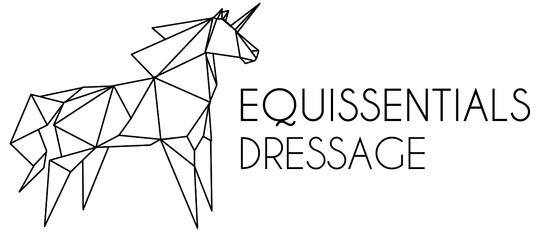Sponsored rider Fran Turner shares her thoughts with us this week on riding hot horses. Fran is currently producing her 13hh Welsh pony stallion 'Raf' for British Dressage young pony classes following her success with her retrained ex racehorse who she trained from the track to PSG.

She describes Raf as very 'goey' - never spooky, never silly but always thinking about moving forward and sometimes that means his hind leg is 10 steps ahead of his brain!
So how do you school a hot horse, how do you avoid all that power ending up in your hands?
The first thing to do is to get them accepting your leg -that old saying of “ride a hot horse with your leg on and a lazy horse with your leg off” is so true, after all if you cannot use your leg for fear of an overreaction then the horse is just running, not pushing or carrying with the hind leg as you need it to be.
In walk you may not be able to give them a long rein straight away but that is the ultimate aim before moving up to trot. Moving the horse sideways with a few steps of leg yield or a turn on the forehand at each corner of a square is a nice easy way to get them accepting the leg and starts to channel the power rather than having them just running in to the hand forwards and through the bridle.
Once the horse is accepting of the leg you can develop the exercise into leg yield from centre line to track and from track to centre line. Starting with an easy line from track to centre line and then straight - then working up to shallow zig zags so the horse feels both legs touching him and starts to wait for the aid rather than taking over.
By now you should be able to allow the horse to take the rein out and down and march on a longer rein, and he should be swinging along rather than bustling.
Moving up in to trot Fran uses the lateral work to encourage the hind leg to take more weight and not just hurry forward.
Raf is very soft in the hand so he tends to curl up when rushing, thus ending up with a short neck and on the forehand encouraging that neck to go forward and down rather than BTV is a day by day, week by week process as the neck can only stretch as much as the hind leg can carry weight, so I am never worried if a young horse comes a little too deep in the early stages, as they gain strength they can keep a longer neck that reaches forward to the hand for increasing periods of time.

Pic above shows the start of the trot warm up with a slightly short neck and rushed steps.
One of my absolute favourite exercise in trot is to ride a figure of eight, but turning each diagonal line in to a leg yield across the centre line, so turn straight on to the diagonal then push sideways across the centre line, then straighten again before the corner. This stops the horse taking over on the straight line and keeps the ribs soft to both legs.
Once the horse has settled and I can allow the neck to stretch forward and down without losing balance I will then move on to trot/walk/trot on a circle, but always ensuring I can allow the hand forward after the walk transition ie that I am not holding the horse in the walk and that it is relaxed and 4 beat.

Post warm up a much longer neck, and the hind leg stepping in to the front footprint.
Thanks Fran for sharing your thoughts with us, we're really looking forward to part two where we'll hear about working the canter.
Do let us know in the comments if you try these exercises and how you get on!

